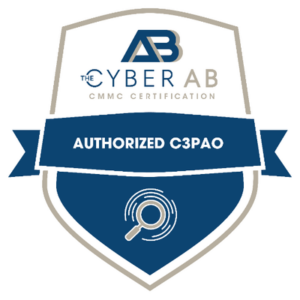
The Cybersecurity Maturity Model Certification (CMMC) is becoming a critical standard for companies contracting with the U.S. Department of Defense (DoD). SecureStrux, recently partnered with “Proposal Helper” in a webinar to share our experience in guiding federal clients through cybersecurity compliance. You can watch the full presentation in our Cyber Advisory Center or enjoy this short recap, which provides invaluable insights into preparing for CMMC compliance.
Understanding CMMC Compliance
In 2009, the Obama Administration issued Executive Order 13556, which initiated the classification of Controlled Unclassified Information (CUI). CMMC protects Controlled Unclassified Information (CUI) under specific regulatory mandates. Adherence to DFARS clauses 7012, 7020, and 7021 is paramount, as they detail how contractors must implement the NIST 800-171 framework to safeguard sensitive information.
CMMC 2.0 delineates three certification levels, each with a focus tailored to the sensitivity of information handled: basic cyber hygiene, intermediate cyber hygiene, and good cyber hygiene. Companies must evaluate their specific needs to determine the appropriate level of certification to pursue.
Starting early in the compliance process cannot be overstressed. As discussed in the webinar, preparing for CMMC before it becomes a mandatory requirement ensures businesses are not scrambling to meet compliance standards at the last-minute, which can be both challenging and costly.
Creating a CMMC Compliance Roadmap
Effective scoping is crucial for a successful CMMC audit. It involves identifying and protecting boundaries where CUI is stored, processed, and exchanged. Missteps in scoping can lead to unnecessary complexity and increased costs.
Building a strategic compliance roadmap involves detailed planning, starting with identifying key assets and processes that handle CUI. Establishing clear milestones and timelines helps businesses systematically approach compliance.
Implementing Security Controls
CMMC requires the implementation of both technical and administrative controls. This dual approach ensures that all aspects of information security are addressed, from physical security measures to cybersecurity policies and procedures.
Engaging non-technical staff in the compliance process is essential. They play a critical role in administrative controls and must be educated on their responsibilities related to CMMC compliance.
Developing Documentation for CMMC Compliance
1. System Security Plans
A System Security Plan (SSP) is a comprehensive document that outlines how a company meets the security requirements of CMMC. It should include detailed descriptions of controls, processes, and the flow of CUI within the organization.
2. Roles and Responsibilities Matrix
Defining clear roles and responsibilities is vital for maintaining accountability in implementing and managing CMMC practices. This matrix should be regularly updated to reflect any changes in roles or procedures.
3. Policies and Procedures
Documented policies and procedures are foundational to achieving and demonstrating compliance. They provide a blueprint for action and accountability, ensuring that all practices are performed consistently and in line with CMMC requirements.
Guidance for CMMC Compliance with SecureStrux
Embarking on the path to CMMC compliance can be daunting, but starting early, planning thoroughly, and utilizing expert guidance like that provided by SecureStrux can ease the journey. We encourage businesses to proactively engage with CMMC, ensuring they are prepared well ahead of any regulatory mandates.
For further assistance in navigating this complex landscape, reach out to SecureStrux’s experienced consultants. We are here to help you simplify and streamline the process.
The latest in Cybersecurity
Enter your email to get the latest news, updates,
and content on cybersecurity.
"*" indicates required fields





